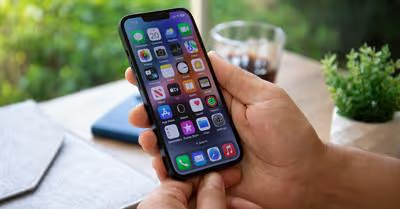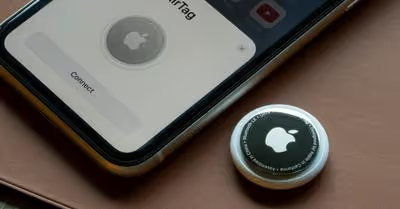Table of Contents
Let’s Isolate the Issue
To begin, it is vital to establish whether the data connection you are using is the root cause of all the problems. Here are a few things you can do.
- Move to the top left corner of your device’s screen. If you can’t find any 4G or 5G symbols, it is a sign that your data is not working. Sometimes, the symbols are there, but the data still doesn’t work.
- If you are having an issue with a specific application, try reinstalling the application.
- Also, make sure there isn’t a carrier outage within your locale. Carrier outages aren’t common, but they can happen sometimes.
Once you have isolated the root cause of the problem, you must move to fix the problem. Here are some key steps you can take.
Turn Wi-Fi Calling Off
Switching a call to a Wi-Fi network is helpful if it helps you get better signals. However, sometimes Wi-Fi calling tends to interfere with your cellular connection. If this is the problem, switching off your Wi-Fi calling is better. This can be done in two ways, which are as follows.
- Access the settings on your device and then go to “phone.” When you see the Wi-Fi calling option, tap it to turn it off.
- You can also tap “cellular” rather than “phone” and turn off Wi-Fi calling.
Try Reinserting Your SIM Card
It is uncommon for the SIM card to get dirty while still inside the phone. However, removing and reinserting the card back into your iPhone will allow the device to reread the card while enabling your cellular data to work again.
- Turn the device off.
- Pull out the SIM card tray with a safety pin or a small object.
- Remember, for iPhones 12 and 13, the tray is situated on the left side. In earlier models, the tray is located on the right.
- Slide the SIM card back in and turn the phone on.
Try Resetting the Network Settings
If the previous two techniques didn’t work, chances are your device needs a network reset. By doing so, you will wipe out any saved networks while resetting your data settings. Here are a few steps you need to follow.
- Access the Settings app on your device, and tap “general.”
- Next up, locate the “reset” option.
- Within the “reset” menu, you will see “reset or transfer” toward the bottom of your screen. We are assuming you are using the iOS 15.
- Then tap “reset network settings.”
- You should try using the cellular data to see if the problem is still there.
Use Airplane Mode
It is common for iPhones and iPads to get a little confused sometimes, especially when it comes to data and cellular signals. Turning the data on and off can help you troubleshoot the problem. Here are some steps to follow if you are using iOS 15 on an iPhone X or a later version.
- Swipe down the top right corner of your screen. By doing so, you will open the control center.
- While on the control center, turn on “airplane” mode. Wait for a few minutes before turning it off.
If you are using an older iPhone, here are the steps to follow.
- Swipe up from the bottom edge of your screen to open the control center.
- Turn the “airplane” mode on, and allow your device to reconnect to cellular data.
Check Carrier Updates
A carrier update can also help you solve the issue. These updates are not frequent, but you must have the latest version to be able to troubleshoot SIM problems on an iPhone or iPad. There is a good chance that a carrier update will help your connectivity, even if it doesn’t solve any major network issue.
- Access the Settings app on your phone, tap “general,” and go to the “about” section. From there, go down and tap the “general menu.”
- Next up, tap the “about” option, and wait for a pop-up to appear. The pop-up will say “carrier settings update".
- Tap “Update” and wait for the updates to take place.
Check for Any iOS Updates
If there aren’t any carrier updates, you might need to update iOS to the latest version. You can check for these updates in the same place. A lot of cellular data issues can be taken care of with a simple software update. Apple works closely with its carrier partners to identify and deal with network issues. You can often find these fixes frequently appearing within the new iOS update notes.
- First up, open the “settings” app. From there, scroll down and press the “general” menu.
- Under the “general” menu, you will find a software update, so press it right away.
If you find a new update, make sure to install it there and then. Your device will restart, so wait for a few minutes. Once the device starts to function, check if the network connection issues are still there. If the issues are resolved, you are good to go. If not, you might need an alternative plan of action.
Turn Off the VPN
Sometimes, being connected to a VPN can also block cellular data. A VPN is usually used for protection on public Wi-Fi or to bypass geographical restrictions when visiting certain web pages. If you experience issues with your cellular phone data on your iPhone or iPad, try disabling the VPN for a few minutes, and see if it solves the problem.
Having SIM card or cellular data issues on your iPhones or iPads can be a frustrating experience, as it wastes time, especially when you are in the middle of something important. Make sure to follow the steps mentioned above. If none of them work, you can opt for a factory reset, and if that doesn’t work, contact Apple’s customer support right away.
Recent Articles

















